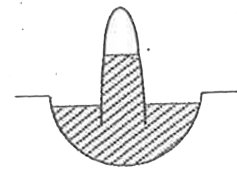What do you observe when
(a) Ice cold water is filled in a glass tumbler.
(b) A burning candle is covered with an inverted jar.
(c ) Carbon dioxide gas is passed through lime water.
(d) A beam of light is allowed to enter in a closed dark room through a small hole.
Step by step video & image solution for What do you observe when (a) Ice cold water is filled in a glass tumbler. (b) A burning candle is covered with an inverted jar. (c ) Carbon dioxide gas is passed through lime water. (d) A beam of light is allowed to enter in a closed dark room through a small hole. by Chemistry experts to help you in doubts & scoring excellent marks in Class 6 exams.
Updated on:21/07/2023Similar Questions
What happens when carbon dioxide is passed through lime water?
View SolutionWhat do you observe :
Carbon dioxide is passed through lime water first a little, then in excess.
View SolutionWhat do you observe when
CO2 is passed through lime water first a little and then in excess.
View SolutionState your observations and give balanced equations of the reactions when carbon dioxide is passed through clear lime water (a) for a short time (b) for a long time.
View SolutionExplain what is observed
(a) When an electrolyte NaCl is added to ferric hydroxide sol.
(b) When an emulsion is subjected to centrifugation.
(c) When direct currect is passed through a colloidal sol.
(d) When a beam of light is passes through a colloidal solution.
View SolutionWhat do you observe when you add a few drops of acetic acid to a test tube containing.
(a) phenolphthalein (b) distilled water (c) universal indicator (d) sodium hydrogen carbonate.
View SolutionName the process associated with the following
(a) Dry ice is kept at room temperature and at one atmospheric pressure.
(b) A drop of ink placed on the surface of water contained in a glass spreads throughout the water.
(c) A potassium permanganate crystal is in a beaker and water is poured into the beaker with stirring.
(d) An acetone bottle is left open and the bottle becomes empty.
(e) Milk is churned to separate cream from it.
(f) Settling of sand when a mixture of sand and water is left undisturbed for some time.
(g) Fine beam of light entering through a small hole in a dark room. Illuminates the particles in its paths.
View Solution(a) A student dropped a few pieces of marble in dilute hydrochloric acid contained in
a test tube. The evolved gas was passed through lime water. What change would
be observed in lime water ? Write balanced chemical equations for both the
changes observed.
(b) State the chemical property in each case on which the following uses of baking
soda are based:
(i) as an antacid (ii) as a constituent of baking powder.
View SolutionFill in the blanks.
(a) A colloid is a ……… mixture and its components can be separated by the technique known as ……… .
(b) Ice, water and water vapour look different and display different ………. Properties but they are ……. the same.
(c) A mixture of chloroform and water taken in a separating funnel is mixed and left undisturbed for some time. The upper layer in the separating funnel will be of ........ and the lower layer will be that of ....... .
(d) A mixture of two or more miscible liquids, for which the difference in the boiling points is less than 25 K can be separated by the process called .......... .
(e) When light is passed through water containing a few drops of milk, it shows a bluish tinge. This is due to the ...... of light by milk and the phenomenon is called .......... . This indicates that milk is a ........... solution.
View SolutionTorricelli was the first do devise an experiment for measuring atmospheric pressure . He took calibrated hard glass tube , 1 m in lengt and of uniform cross section , closed at one end . He filled the whole tube with dry mercury taking care than no air or water droplets remain inside the tube , closed the opposite end of the tube tightly with thumb and inverted it . He put this inverted mercury tube into a mercury through , taking care that the end of the tube remains inside the mercury through , An interesting thing was noticed . Mercury in the tube fell down at first and then stopped at a particular position . The height was 76 cm above the free surface of mercury in the through . When the given tube was inclined or lowered in the mercury trough , the vertical haight of mercury level in the tube was always found constant .
Torricelli explained this by saying that the free surface of mercury in the trough . Hence , the hydrostatic pressure exerted by the trough measures the atmospheric pressure .

If this expriment uses water instead of mercury , then
A. length of water will be equal to 76 cm
B. length of water will be less than 76 cm
C. length of water will be greater than 76 cm
D. none of the above
View Solution
